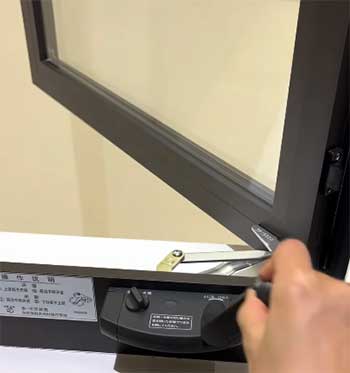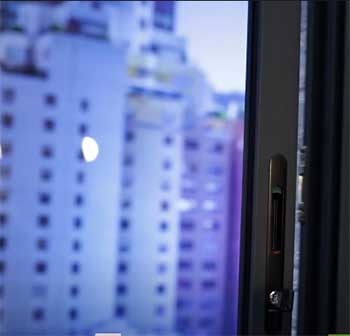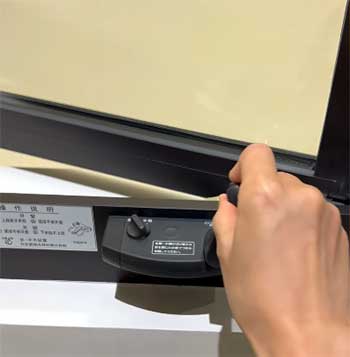I’ve spent years weighing the merits of home features, and windows always spark a lively debate. Crank windows (also called casement windows) and sliding windows each bring distinct vibes and functionality to a space.
My goal here is to unpack their features, benefits, and drawbacks to help you decide which fits your home best. From energy efficiency to aesthetics, I’ll explore every angle with a practical lens, sharing insights from my own experiences and research to guide your choice.
A Brief Comparison Table
| Feature | Crank Windows (Casement) | Sliding Windows |
| Operation | Crank handle opens outward | Slide horizontally on tracks |
| Ventilation | Full opening for maximum airflow | Half opening (one sash moves) |
| Energy Efficiency | Tight seal when closed | Good seal, but tracks may allow minor leaks |
| Maintenance | Hinges and cranks need occasional care | Tracks require regular cleaning |
| Space Requirements | Requires exterior clearance | No exterior space needed |
| Aesthetics | Classic, elegant look | Modern, sleek design |
| Cost | Often more expensive | Generally more affordable |
| Security | Strong locking mechanism | Locks effective but may be less robust |
| Best For | Ventilation-focused homes | Space-constrained or modern homes |
Understanding Crank Windows
Crank windows, or casement windows, are my go-to when I want a blend of charm and functionality. They’re hinged on one side and open outward using a crank handle, offering a full, unobstructed opening. I’ve always appreciated how they let in a breeze like no other window type.
Their design feels timeless, often seen in older homes or those chasing a traditional aesthetic.
Pros of Crank Windows

The first thing I notice with crank windows is their ventilation prowess.
Since they open fully, they capture every gust of wind, making them ideal for stuffy rooms.
I’ve had casement windows in my living room, and on warm days, cranking them open feels like inviting the outdoors inside.
Their energy efficiency is another win.
When closed, the sash presses tightly against the frame, creating a seal that rivals the best insulated doors.
In my old apartment, I noticed lower energy bills after replacing old sliders with casements, especially during windy winters.
Security is a strong suit too. The multi-point locking systems on crank windows make them tough to pry open. I felt safer knowing my windows weren’t an easy target for intruders.
Aesthetically, they’re versatile. Whether it’s a colonial-style home or a modern build, casement windows add a touch of elegance. I’ve seen them in sleek black frames that scream sophistication and in white wood frames that feel cozy.
Cons of Crank Windows
But they’re not perfect. The crank mechanism can be a hassle. I’ve had one jam on me during a humid summer, and lubricating it was a chore. If you’re not diligent about maintenance, the gears can wear out, leaving you cranking harder than necessary.
They also need exterior space to open, which can be a dealbreaker. In my last home, a casement window in the kitchen couldn’t fully open because of a nearby bush. It was frustrating to lose that ventilation potential.
Cost is another hurdle. Crank windows often carry a higher price tag due to their hardware and construction. When I budgeted for a home reno, casement windows ate up more of my funds than I’d planned.
Lastly, they’re not ideal for every climate. In areas with heavy rain or snow, an open casement window can let in water if you’re not quick to close it. I learned this the hard way during a sudden downpour.
Understanding Sliding Windows
Sliding windows, on the other hand, have a modern, no-fuss appeal. They glide horizontally along tracks, with one or both sashes moving to open. I’ve always liked their simplicity—push, and you’re done. They’re common in contemporary homes, apartments, and spaces where ease of use is king.
Pros of Sliding Windows

The biggest draw for me is their space efficiency.
Since they don’t swing outward, sliding windows work in tight spots.
In my city apartment, where exterior space was nonexistent, sliders were a lifesaver.
I could open them without worrying about hitting patio furniture or walls.
They’re also easier on the wallet.
When I compared quotes for my home, sliding windows were consistently cheaper than casements. For budget-conscious folks, that’s a huge plus.
Maintenance is straightforward too. The tracks need occasional cleaning to keep them gliding smoothly, but there’s no crank to fiddle with. I’ve found a quick vacuum and wipe-down keeps them in top shape.
Their modern aesthetic is another perk. I’ve seen sliding windows in sleek aluminum frames that gave a minimalist vibe to a friend’s condo. They blend seamlessly with clean lines and open floor plans.
Cons of Sliding Windows
Ventilation is where sliders fall short. Since only half the window opens (unless both sashes move), you’re not getting the full airflow of a crank window. In my bedroom, I often wished for more breeze on muggy nights.
Energy efficiency, while solid, isn’t as airtight as casement windows. The tracks can collect dust or wear down, leading to minor air leaks. I noticed this in an older rental where the sliders let in drafts during winter.
Security can also be a concern. While modern sliders have decent locks, they’re not as robust as casement locks. I’ve read about sliders being easier to jimmy open, which made me double-check my locks at night.
Lastly, the tracks can be a pain if neglected. Debris like dirt or pet hair can clog them, making the window stick. I’ve spent more time than I’d like scrubbing tracks to keep them functional.
Key Features of Crank And Sliding Windows Comparison
Let’s break down the key features that set these windows apart. I’ve lived with both, so I’ll share what stood out in real-world use.

- Operation and Ease of Use: Crank windows require a bit of effort to open, especially if the mechanism is stiff. I’ve found myself cranking away on older models, which isn’t fun if you’re in a rush. Sliding windows, by contrast, are effortless—just a gentle push, and they glide open. For elderly folks or kids, sliders are often easier to handle.
- Ventilation: If airflow is your priority, crank windows win hands-down. Their full opening catches every breeze, which I loved in my airy living room. Sliding windows, limited to half their width, can feel restrictive. I noticed this in my office, where a slider left the room stuffier than I’d hoped.
- Energy Efficiency: Both window types can be energy-efficient, but crank windows edge out slightly. Their tight seal minimizes air leaks, which I appreciated in colder months. Sliders, while good, can lose efficiency if the tracks wear or aren’t maintained. I felt the difference in my utility bills between the two.
- Aesthetics: This one’s subjective, but I lean toward crank windows for their classic charm. They add character to any room, especially with wood frames. Sliding windows, though, have a sleek, modern edge that I’ve seen work wonders in urban lofts. It depends on your home’s vibe.
- Space Requirements: Sliding windows are the clear winner for tight spaces. I’ve installed them in rooms where exterior clearance was an issue, and they worked perfectly. Crank windows need room to swing outward, which can clash with landscaping or outdoor furniture.
- Cost: Budget matters, and sliders typically cost less. When I priced out replacements, casements were 20-30% more expensive due to their hardware. If you’re outfitting multiple windows, that adds up fast.
- Security: Crank windows feel more secure to me. Their multi-point locks are tough to breach, giving me peace of mind in ground-floor rooms. Sliders, while lockable, can be vulnerable if the track or lock isn’t top-notch. I always double-checked my sliders at night.
- Maintenance: Sliding windows are easier to maintain in my experience. Tracks need cleaning, but it’s quick work with a vacuum and cloth. Crank windows require more TLC—lubricating the crank and checking hinges can be a chore, especially if you’re not handy.
Other Differentiating Factors of Crank And Sliding Windows
- Digging Into Durability And Longevity: Durability is a big factor, and both window types have their strengths. Crank windows, with their sturdy hinges and frames, can last decades if maintained. I’ve seen casements in 50-year-old homes still functioning, though the cranks needed occasional oiling. The downside? If the crank mechanism fails, repairs can be costly. Sliding windows are durable too, especially with modern materials like vinyl or aluminum. I’ve had sliders that held up for years with minimal care. However, the tracks can wear out if not cleaned regularly, and replacing a sash can be a hassle if it gets damaged.
- Installation Considerations: Installation is another angle I’ve wrestled with. Crank windows often require precise fitting due to their hinges and outward swing. When I had casements installed, the contractor spent extra time ensuring the frame was level to avoid crank issues. Sliding windows are simpler to install, which can save on labor costs. In my last reno, sliders went in faster and with fewer hiccups.
- Customization Options: Both window types offer customization, but I’ve found crank windows more flexible for unique shapes. You can get them in tall, narrow designs or even arched tops for a custom look. Sliding windows are typically rectangular, though I’ve seen large, panoramic sliders that make a bold statement in modern homes.
- Environmental Impact: Sustainability matters to me, so I looked into the environmental side. Both windows can be made with energy-efficient materials like low-E glass, which I’ve used to cut down on UV damage to furniture. Crank windows, with their tighter seals, might save slightly more energy, but modern sliders with good weatherstripping are close contenders.
Which Window Fits Your Home?
To make this practical, let’s walk through scenarios based on my experiences and what I’ve learned from others.

- Urban Apartments: In my city apartment, space was tight, and sliding windows were a no-brainer. They didn’t need exterior clearance, which was perfect for my balcony setup. Their modern look also matched the building’s aesthetic. If you’re in a similar spot, sliders are likely your best bet.
- Suburban Homes: In a suburban house I lived in, crank windows shone. The large casements in the living room let in tons of air and light, making the space feel open and inviting. If you’ve got room outside and want ventilation, casements are ideal.
- Historic Homes: For older homes, I’d lean toward crank windows. Their classic design blends with traditional architecture, and I’ve seen them elevate the charm of colonial or Victorian-style houses. Sliders can feel out of place in these settings.
- Budget Renovations: When I was on a tight budget, sliding windows saved the day. They’re affordable and easy to install, which was a relief during a home reno. If cost is a factor, sliders give you solid performance without breaking the bank.
- High-Wind or Rainy Climates: In areas with frequent storms, I’ve found crank windows trickier. You’ve got to be quick to close them, or rain can sneak in. Sliders, staying within the frame, are less prone to this issue, making them better for wet climates.
Making Your Choice
So, how do you choose? I’d start by asking what your home needs most. If ventilation and security are top priorities, crank windows are hard to beat. If you’re working with limited space or a tight budget, sliding windows make more sense.
I’ve lived with both, and each has its charm—it’s about matching the window to your lifestyle.
For me, the decision came down to context. In my airy suburban home, crank windows were a dream for airflow and aesthetics. In my cramped apartment, sliders were practical and stylish. Think about your space, climate, and budget, and you’ll find the right fit.
Frequently Asked Questions (FAQ)
It depends on your needs. Casement windows offer better ventilation and security, while sliding windows are space-efficient and budget-friendly.
The main drawback is the need for exterior clearance, which can limit their use in tight spaces or near landscaping.
Sliding windows provide less ventilation since only half the window opens, which can be limiting in stuffy rooms.
Casement (opening) windows are best for ventilation and security; sliding windows are ideal for tight spaces and lower costs.
Wrapping Up
Choosing between crank windows and sliding windows is all about what you value most. I’ve walked you through the pros, cons, and real-world scenarios to help you weigh your options. Crank windows bring unmatched airflow and timeless style, while sliders offer simplicity and affordability.
Think about your home’s layout, your budget, and how you want your space to feel. You can’t go wrong with either, but the right choice hinges on your unique needs. I hope this guide helps you find the perfect windows for your home!
